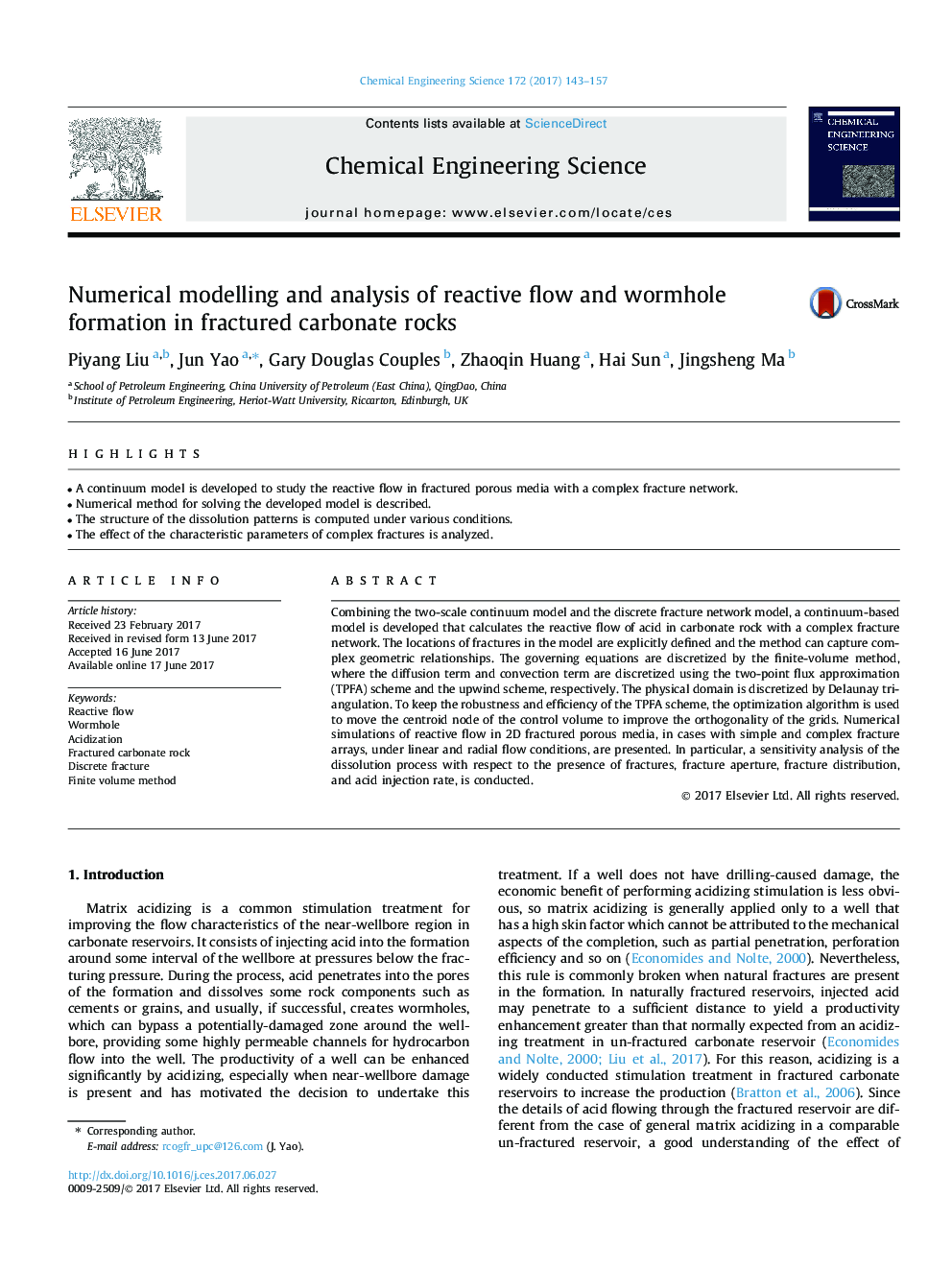| Article ID | Journal | Published Year | Pages | File Type |
|---|---|---|---|---|
| 6467010 | Chemical Engineering Science | 2017 | 15 Pages |
â¢A continuum model is developed to study the reactive flow in fractured porous media with a complex fracture network.â¢Numerical method for solving the developed model is described.â¢The structure of the dissolution patterns is computed under various conditions.â¢The effect of the characteristic parameters of complex fractures is analyzed.
Combining the two-scale continuum model and the discrete fracture network model, a continuum-based model is developed that calculates the reactive flow of acid in carbonate rock with a complex fracture network. The locations of fractures in the model are explicitly defined and the method can capture complex geometric relationships. The governing equations are discretized by the finite-volume method, where the diffusion term and convection term are discretized using the two-point flux approximation (TPFA) scheme and the upwind scheme, respectively. The physical domain is discretized by Delaunay triangulation. To keep the robustness and efficiency of the TPFA scheme, the optimization algorithm is used to move the centroid node of the control volume to improve the orthogonality of the grids. Numerical simulations of reactive flow in 2D fractured porous media, in cases with simple and complex fracture arrays, under linear and radial flow conditions, are presented. In particular, a sensitivity analysis of the dissolution process with respect to the presence of fractures, fracture aperture, fracture distribution, and acid injection rate, is conducted.
